This pub is closed permanently. Your nearest Wetherspoon pub: The Joseph Else
This pub takes its name from the Trent Navigation Company which built this former warehouse on the north bank of the Nottingham Canal. The Fellows, Morton and Clayton building stands close to the British Waterways Warehouse, separated by the detached Waterfront Bar.
Photographs, prints and text about hosiery, lace and luddities.
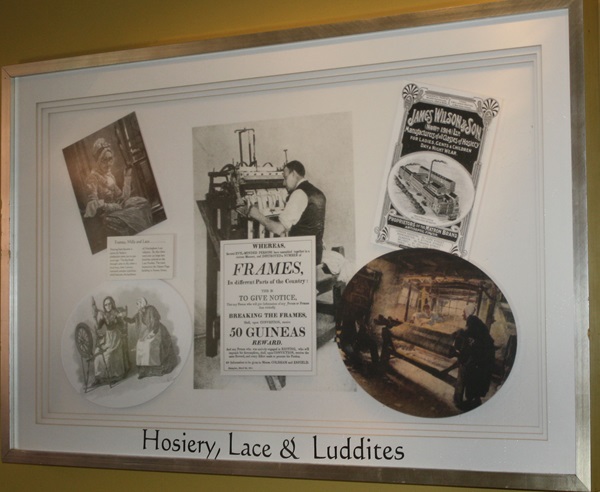
The text reads: Nottingham became a centre for hosiery production some 300 to 400 years ago. The big breakthrough came in 1813 when a local man, John Leavers, invented complex machines which became the backbone of Nottingham Lace industry. By 1830 there were over 130 large lace factories centred on the Lace Market. The most impressive the Adams Page building in Stoney Street.
Illustrations and text about Inland Revenue.
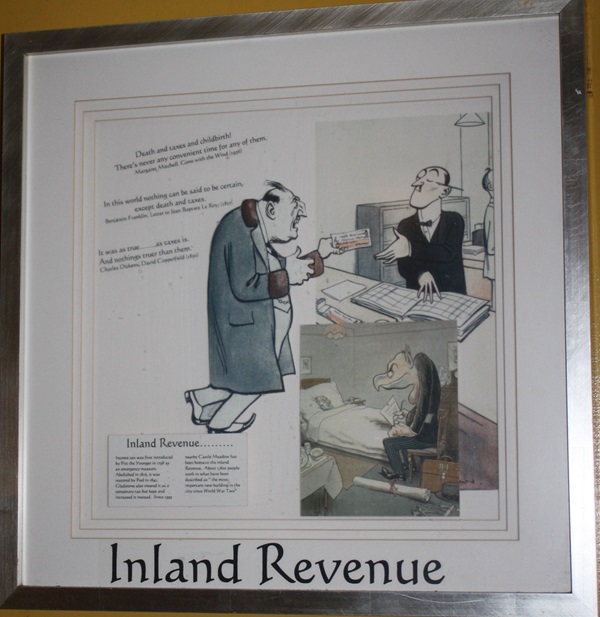
The text reads: Income tax was first introduced by Pitt the Younger in 1798 as an emergency measure. Abolished in 1816, it was restored by Peel in 1842. Gladstone also viewed it as a temporary tax but kept and increased it instead. Since 1995 nearby Castle Meadow has been home to the Inland Revenue. About 1,800 people work in what have been described as “the most important new building in the city since World War Two”.
Prints and text about things that originated in Nottingham.
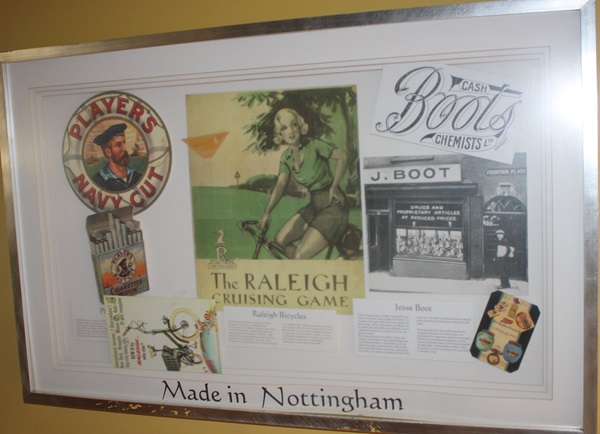
The text reads: Jesse Boot
Today I imagine there is hardly a household in the country that doesn’t shop at Boots the chemist. In virtually every major High Street we recognise the familiar logo. With the passage of time Boots has diversified and today offers many different services from opticians to insurance services and beauty products.
But it started out with Jesse Boot’s father John opening a herbal shop in Nottingham dispensing cheap herbal remedies to the poor who could not afford physicians. Jesse was born in 1850 and his father died when he was still young. Jesse helped his mother in the shop and studied pharmacy in his spare time. He sold his produce at greatly reduced prices and advertised the fact by employing a bell ringer.
People flocked to his store, and Jesse broke the monopoly of doctors who made up their own prescriptions by employing a chemist and thereby halved the cost of dispensed medicine, and the business expanded. Jesse’s wife Florence, daughter of a bookseller, introduced Boots’ Book Lovers Club, and it was she who opened the 1,000th shop in Galashiels in 1931.
Raleigh Bicycles
The company was formed in 1890 by Sir Frank Bowden in a small shop in Raleigh Street, Nottingham and by 1896 the largest bicycle factory in the world was built. Today Raleigh bikes are manufactured and distributed worldwide. Their reputation was enhanced during the 40’s and 50’s, the heyday of cycling mania, when the 4 time World Track champion Reg Harris adopted Raleigh as his preferred bike. Raleigh engineers worked flat out to design a bike that could stand up to the stress Reg inflicted- he was prone to buckling the frames in competition with his furious peddling.
To this day Raleigh is dedicated to the advancement of the sport and is at the fore front of developing technology to perfect the mountain bike.
Illustrations and text about the coal industry.

The text reads: The pits of Nottinghamshire are the most productive mines in the most productive coalfield in the country.
Coal has been mined in Nottinghamshire since medieval times- Queen Eleanor, wife of Henry III, moved out of Nottingham Castle in 1257 to Tutbury complaining of the air pollution caused by the ‘sea-coal’ of the Erewash Valley. Most coal would have been used locally for lime-burning, brewing, baking and iron-smelting, but by the early 16th Century a flourishing pit at Wollaton, for example, had developed markets much further afield. At the beginning of the 17th Century, the old bell pits at Strelley were producing 20,000 tons of coal a year- half of the total for the whole of England.
Competition between the various collieries of the country was the reason behind the rapid development first of canals and then railways in Nottinghamshire. In 1938 the county’s pits were producing some 15% of England and Wales’ coal production.
Prints and text about Nottingham and the Civil War.
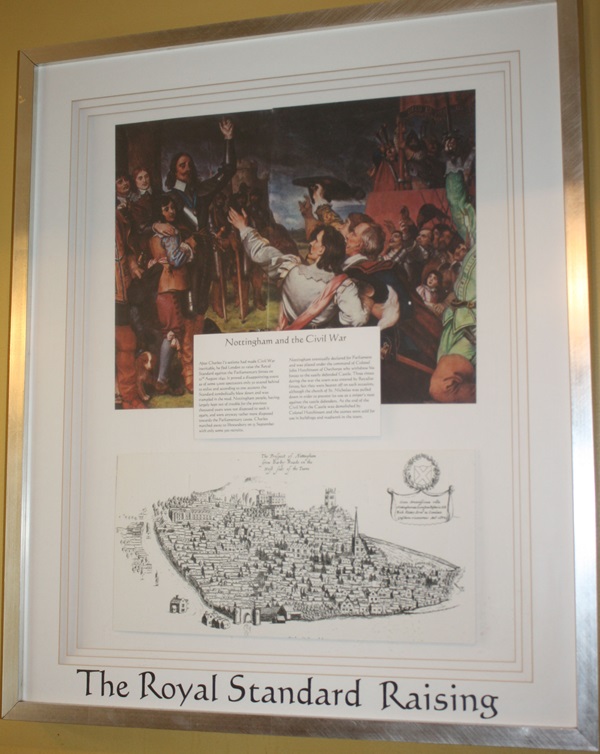
The text reads: After Charles I’s actions had made Civil War inevitable, he fled London to raise the Royal Standard against the Parliamentary forces on 22nd August 1642. It proved a disappointing event as of some 2,000 spectators only 30 stayed behind to enlist and according to one account the Standard symbolically blew down and was trampled in the mud. Nottingham people, having largely kept out of trouble for the previous thousand years were not disposed to seek it again, and were anyway rather more disposed towards the Parliamentary cause. Charles marched away to Shrewsbury on 13 September with only some 300 recruits.
Nottingham eventually declared for Parliament and was placed under the command of Colonel John Hutchinson of Owthorpe who withdrew his forces to the easily defeated Castle. Three times during the war the town was entered by Royalist forces, but they were beaten off on each occasion, although the church of St. Nicholas was pulled down in order to prevent its use as a sniper’s nest against the castle defenders. At the end of the Civil War the Castle was demolished by Colonel Hutchinson and the stones were sold for use in buildings and roadwork in town.
Prints, photographs and text about arts and entertainment.
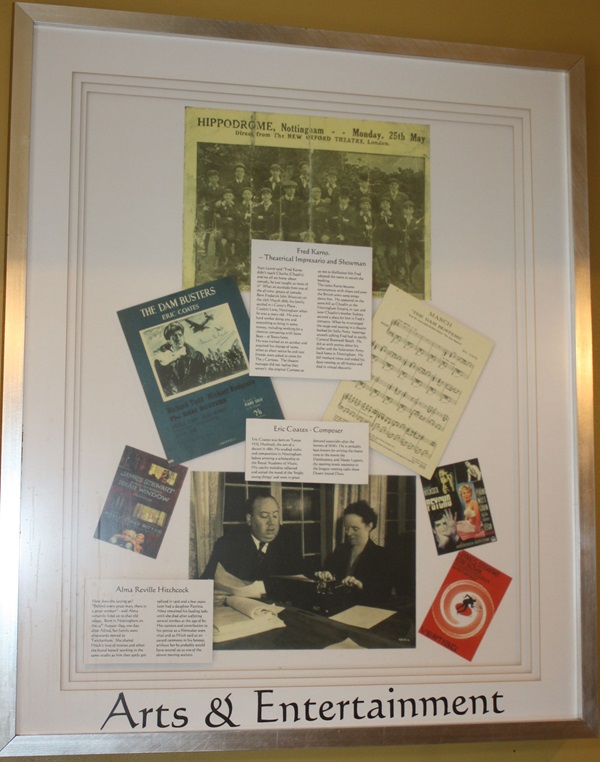
The text reads: Fred Karno- Theatrical Impresario and Showman
Tan Laurel said “Fred Karno didn’t teach Charlie (Chaplin) and me all we know about comedy, he just taught us most of it”. What an accolade from one of the all time greats of comedy. Born Frederick John Westcott on the 26th March 1866, his family settled in 1 Carey’s Place, Coalpit Lane, Nottingham when he was 9 years old. He was a hard worker doing any and everything to bring in some money, including working for a chemist competing with Jesse Boot- of Boots fame.
He was trained as an acrobat and acquired his change of name when at short notice he and two friends were asked to cover for The 3 Carnoes. The theatre manager did not realise they weren’t the original Carnoes so as not to disillusion him Fred adopted the name to secure the booking.
The name Karno became synonymous with chaos and even the British army sang songs about him. He appeared on the same bill as Chaplin at the Nottingham Empire, in 1901 and later Chaplin’s brother Sydney secured a place for him in Fred’s company. When he re-arranged the stage and seating in a theatre booked for Sally Army meetings smooth talking Fred had to pacify General Bramwell Booth. He fell into hard times and ended his days running an off-licence and died in virtual obscurity.
Eric Coates- Composer
Eric Coates was born on Tenter Hill, Hucknall, the son of a doctor in 1886. He studied violin and composition in Nottingham before winning a scholarship to the Royal Academy of Music. His catchy melodies reflected and suited the mood of the ‘bright young things’ and were in great demand, especially after the horrors of World War I. He is probably best known for writing the theme tune to the movie the Dambusters, and Sleepy Lagoon, the opening music sequence to the longest running radio show Desert Island Discs.
Alma Reville Hitchcock
How does the saying go? ‘Behind every great man, there is a great woman”- well Alma certainly lived up to that old adage. Born in Nottingham on the 14th August 1899, one day after Alfred, her family soon moved afterwards to Twickenham. She shared Hitch’s love of movies and when she found herself working in the same studio as him they aptly got spliced in 1926 and a few years later had a daughter Patricia.
Alma remained his leading lady until she died after suffering several strokes at the age of 80. Her opinion and contribution to his genius as a filmmaker were vital and as Hitch said at an award ceremony in his honour, without her he probably would have wound up as one of the slower moving waiters.
Prints, photographs and text about famous men of Nottingham.
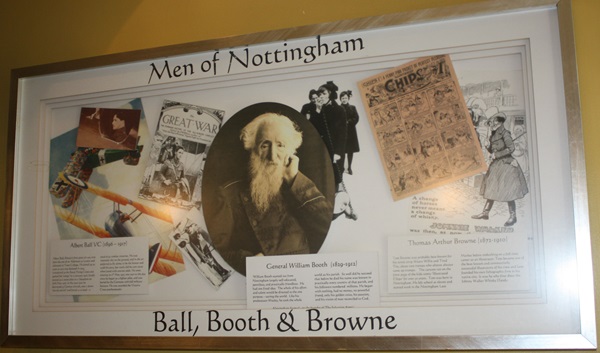
The text reads: Albert Ball VC (1896-1917)
Albert Ball, Britain’s first great air ace, was born the son of an Alderman at Lenton and educated at Trent College. He joined up as soon as war was declared in 1914, transferred to the Royal Flying Corps and gained his ‘wings’ in 22 January 1916, finally posted as a scout pilot to 11 Squadron on 7th May 1916. In the next year he destroyed 23 German aircraft, sent 2 down ‘out-of-control’ and forced to land- a total of 47 combat victories. He was intensely shy on the ground, and in the air he preferred to fly alone; to be the hunter and stalk his prey, but rarely did he turn away when faced with uneven odds. He went missing on 7th May 1917, one year to the day since he began as a fighter pilot, and was buried by the Germans with full military honours. He was awarded the Victoria Cross posthumously.
General William Booth (1829-1912)
‘William Booth started out from Nottingham largely self-educated, penniless, and practically friendless. He had one fixed idea. The whole of his effort and talent would be directed to the one purpose- saving the world. Like his predecessor Wesley, he took the whole world as his parish. So well did he succeed that before he died his name was known in practically every country of that paris, and his followers numbered millions. He begam with nothing, had no money, no powerful friend, only his golden voice, his passion, and his vision of man reconciled to God.’
Nottingham Journal on the founder of ‘The Salvation Army’.
Thomas Arthur Browne (1872-1910)
Tom Browne was probably best known for his comic strip Weary Willie and Tired Tim, about two tramps who almost always came up trumps. The cartoon ran on the front page of the kids comic ‘Illustrated Chips’ for over 50 years. Tom was born in Nottingham. He left school at eleven and started work in the Nottingham Lace Market before embarking on a full time career as an illustrator. Tom became one of the best known and commercially successful illustrators of his time and later founded his own lithographic firm in his native city. It was he who first drew the Johnny Walker Whisky Dandy.
Prints and text about Robin Hood.
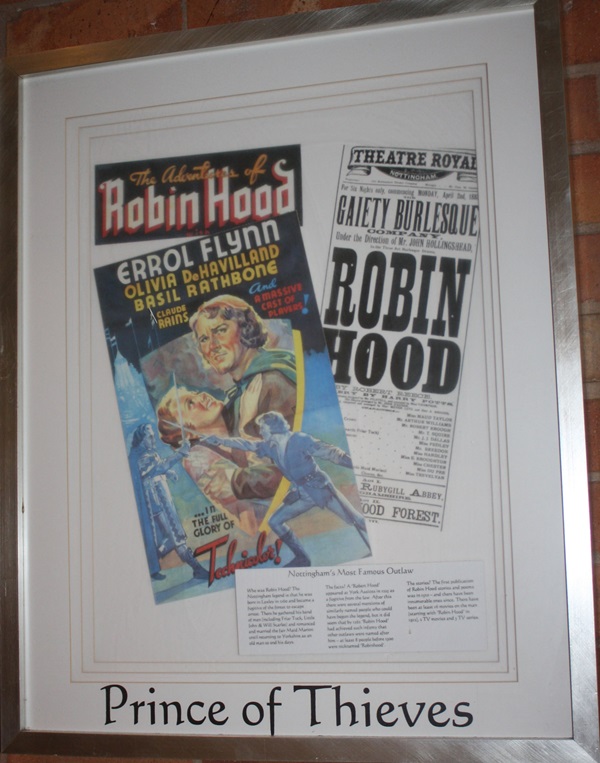
The text reads: Who was Robin Hood? The Nottingham legend is that he was born in Loxley in 1160 and became a fugitive of the forest to escape arrest. There he gathered his band of men (including Friar Tuck, Little John and Will Scarlet) and romanced and married the fair Maid Marion until returning to Yorkshire as an old man to end his days.
The facts? A ‘Robert Hood’ appeared at York Assizes in 1225 as a fugitive from the law. After this there were several mentions of similarly named people who could have begun the legend, but it did see that by 1262 ‘Robin Hood’ had achieved such infamy that other outlaws were named after him- at least 8 people before 1300 were nicknamed ‘Robinhood’.
The stories? The first publication of Robin Hood stories and poems was in 1510- and there have been innumerable ones since. There have been at least 16 movies on the man (starting with ‘Robin Hood’ in 1912), 2 TV movies and 3 TV series.
External photograph of the building – main entrance.
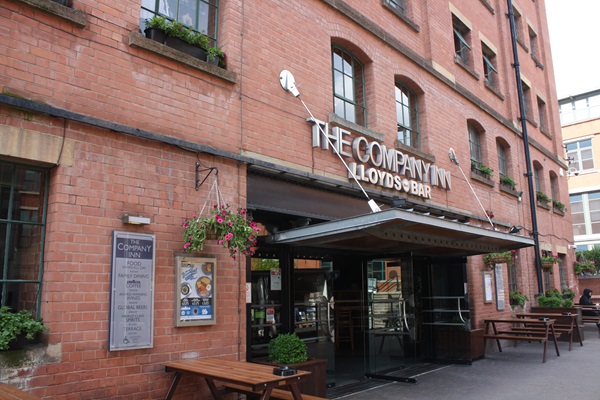
If you have information on the history of this pub, then we’d like you to share it with us. Please e-mail all information to: pubhistories@jdwetherspoon.co.uk